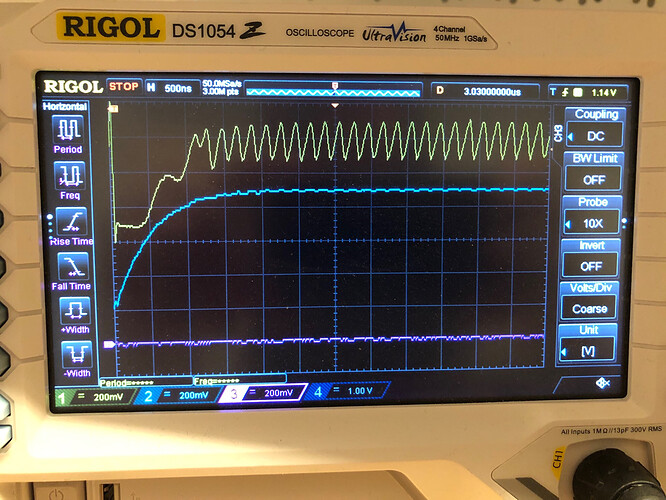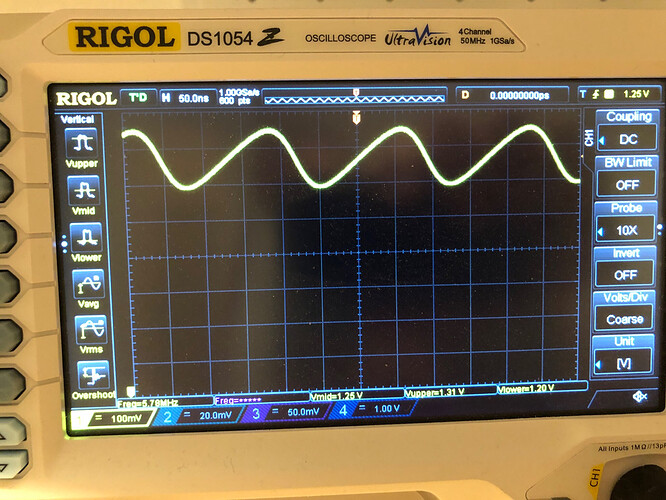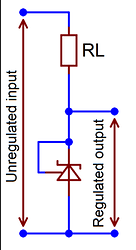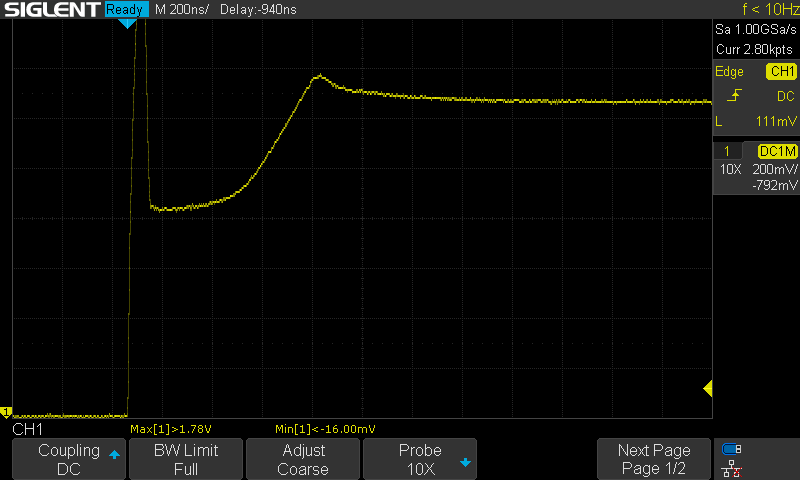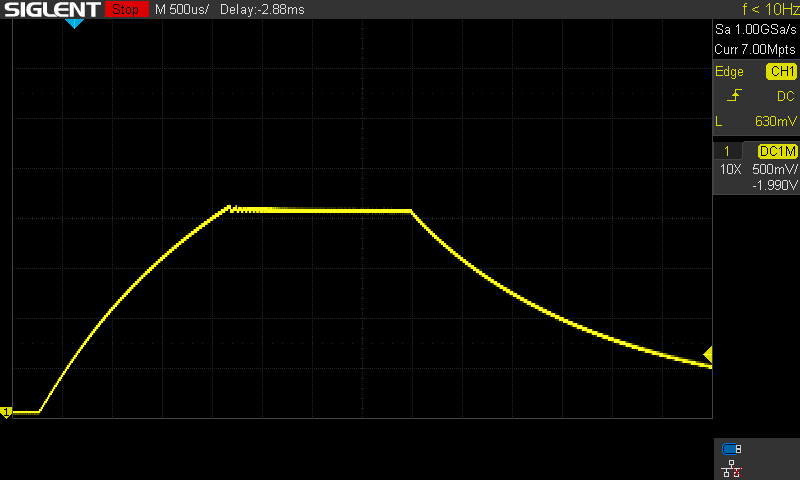Really nice scope!
It also can decode a couple of protocols.
But often it is easier to use a dedicated Adapter on the PC, after you figured out how it works.
@Placing:
My first thoughts were - just to solder a “regular” resistor over D1. Then I took a look to the schematic, and found that “Sensor1” has all necessary connections.
Fortunately you think the same way!
@alternatives:
You can also take a look at the LM4040 Series, you’ve already used. There is a LM4041 1.225V Version.
The LT1009 (and siblings) look good, but are quite expensive.
But with both of them I do not have any experience.
I find, the TL432 makes a good job for its price (beside of my oscillating version)
I’ve only used MCP1700 Series to get stable 4V (out from 5V) for the current Sensor.
But the Input Voltage has to be at least 2,3V.
@unstable TL432
Because R2 is 1k, it is not possible to cover the complete Voltage range with 620R.
1k series 620R means, that when I have 1.25V on 620R, R2 “needs” ad least 2.02V.
So Below 3.27V the Voltage on D1 starts to drop because of the voltage divider (R2 with additional 620R)
With 3,4V and 620R in parallel to D1 it is stable, but starts above about 3,8V to be unstable.
Because of this, I tried also to change R2. But after some not successful tests, I decided to add a capacitor to “shorten” the 5MHz.
Because of the high frequency a small capacitor is enough. I tried 100nF - that was enough to make it stable over the whole Voltage range.
Then I looked to the data sheet. - I found the section “Stability Boundary Conditions”.
When I correctly read the data sheet, in our configuration it should be less than about 5nF and greater than about 6uF to be in the stable area.
With 2n2 or 4n7 it is not stable, with 100n or 1u it is stable. Even when the data sheet says it is not.
So to be on the save side and within the specs, I think we have to use 6u8 or still 10u.
Or is 1uF enough, just because it works? - what do you think?
The strange thing is, that they also say that no Capacitor (=below 5nF) is also a valid and already working! Configuration to prevent oscillating.
So - the more I think about it, I think I had only bad luck and got an out of specs TL432
Your thoughts? - changing D1, adding capacitor? (1uF, 10uF?)


